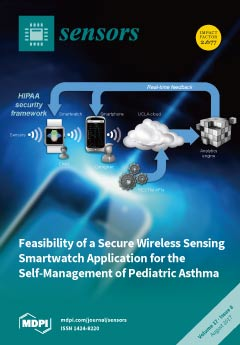Open AccessArticle
Development and Testing of an LED-Based Near-Infrared Sensor for Human Kidney Tumor Diagnostics
by
Andrey Bogomolov 1,2,* , Urszula Zabarylo 1,3, Dmitry Kirsanov 4
, Urszula Zabarylo 1,3, Dmitry Kirsanov 4 , Valeria Belikova 2, Vladimir Ageev 1, Iskander Usenov 1,5, Vladislav Galyanin 2, Olaf Minet 3, Tatiana Sakharova 6, Georgy Danielyan 6, Elena Feliksberger 1 and Viacheslav Artyushenko 1
, Valeria Belikova 2, Vladimir Ageev 1, Iskander Usenov 1,5, Vladislav Galyanin 2, Olaf Minet 3, Tatiana Sakharova 6, Georgy Danielyan 6, Elena Feliksberger 1 and Viacheslav Artyushenko 1
1
Art Photonics GmbH, Rudower Chaussee 46, 12489 Berlin, Germany
2
Laboratory of Multivariate Analysis and Global Modeling, Samara State Technical University, Molodogvardeyskaya 244, 443100 Samara, Russia
3
Medical Physics & Optical Diagnostics, CC6 Campus Benjamin Franklin, Charité Universitätsmedizin Berlin, Hindenburgdamm 30, 12203 Berlin, Germany
4
Institute of Chemistry, St. Petersburg State University, Universitetskaya nab. 7/9, 199034 St. Petersburg, Russia
5
Institute of Optics and Atomic Physics, Technical University of Berlin, Straße des 17. Juni 135, 10623 Berlin, Germany
6
General Physics Institute of Russian Academy of Sciences, Vavilova 38, 119991 Moscow, Russia
Cited by 26 | Viewed by 7753
Abstract
Optical spectroscopy is increasingly used for cancer diagnostics. Tumor detection feasibility in human kidney samples using mid- and near-infrared (NIR) spectroscopy, fluorescence spectroscopy, and Raman spectroscopy has been reported (Artyushenko et al., Spectral fiber sensors for cancer diagnostics in vitro. In Proceedings of
[...] Read more.
Optical spectroscopy is increasingly used for cancer diagnostics. Tumor detection feasibility in human kidney samples using mid- and near-infrared (NIR) spectroscopy, fluorescence spectroscopy, and Raman spectroscopy has been reported (Artyushenko et al., Spectral fiber sensors for cancer diagnostics in vitro. In Proceedings of the European Conference on Biomedical Optics, Munich, Germany, 21–25 June 2015). In the present work, a simplification of the NIR spectroscopic analysis for cancer diagnostics was studied. The conventional high-resolution NIR spectroscopic method of kidney tumor diagnostics was replaced by a compact optical sensing device constructively represented by a set of four light-emitting diodes (LEDs) at selected wavelengths and one detecting photodiode. Two sensor prototypes were tested using 14 in vitro clinical samples of 7 different patients. Statistical data evaluation using principal component analysis (PCA) and partial least-squares discriminant analysis (PLS-DA) confirmed the general applicability of the LED-based sensing approach to kidney tumor detection. An additional validation of the results was performed by means of sample permutation.
Full article
►▼
Show Figures






